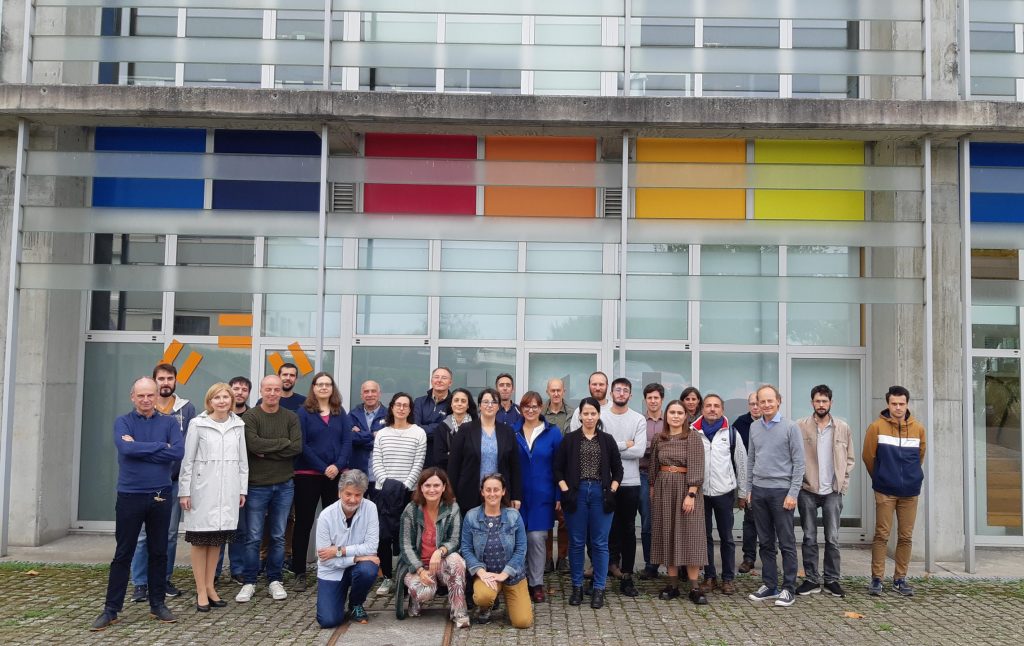
The CITIC of the UDC, a key player in the publication of the new Gaia FPR data archive by the European Space Agency
The European Space Agency (ESA) has released a new astronomical data archive of the Gaia mission, called “Gaia FPR”, which is now available to the international community. The group of Galician researchers, led by the CITIC of the UDC, has played a key role in the validation of the data contained in this archive. Data validation is an essential process in which the quality and consistency of the scientific information is guaranteed, for which exhaustive statistical tests were carried out to eliminate any erroneous or insufficient quality information.
In addition to their role in the validation, astrophysicist Minia Manteiga and computer engineer Carlos Dafonte, both researchers at UDC’s CITIC, along with the rest of the Gaia team at UDC, participate as authors in the scientific articles that will accompany the opening of this archive.
This new launch marks an important milestone in astronomy in very diverse areas, ranging from the study of near-Earth asteroids and other Solar System objects, to quasars, the oldest and most distant objects in the Universe. As is always the case with Gaia satellite measurements, the data are immediately shared and made available to researchers around the world, which is the most effective way to ensure that knowledge, in this case of the Universe, advances rapidly.
The best map of our galaxy
Gaia is mapping our galaxy and more distant galaxies with an extraordinary degree of detail and in several dimensions, not only obtaining positions of stars in the Milky Way and nearby galaxies, but also their velocities and the measurement of their light in a multitude of colors. This allows us to obtain the most accurate stellar census ever performed. The mission is providing a detailed picture of our place in the universe, allowing us to better understand the nature and properties of the various objects that make up the universe.
Among the products included in Gaia FPR are unique data of unprecedented quality on a wide variety of astronomical objects. This includes obtaining detailed orbits of asteroids and planetary satellites within our solar system. This information is essential for accurately predicting their future positions, which is particularly relevant for NEOs (Near Earth Objects) because of their potential danger.
Regarding the most distant objects in the universe, the quasars, Gaia FPR also offers valuable information. Specifically, it has released a list of 381 objects that are strong candidates for “gravitational lensing”. These lenses are repeated images of a single quasar, produced when the light from the quasar is bent due to the presence of a galaxy in its path, creating repeated images on the sky. Detecting these objects is a significant challenge, and Gaia has succeeded in discovering new objects of this type.
Another outstanding finding of Gaia FPR is detailed information on the presence of dust clouds in the Milky Way that affect the light intensity of stars in certain colors, known as Diffuse Interstellar Bands (DIBs). Gaia has succeeded in measuring these DIBs across the entire sky for the first time, providing information that will be crucial for understanding the chemical origin of the molecules contained in these enigmatic interstellar dust clouds.
In addition, the archive contains a detailed list of brightnesses and precise positions of more than half a million stars in the center of the Omega Centauri star cluster, the largest group of stars in the Milky Way, which is suspected to harbor a black hole at its core.
Finally, Gaia FPR provides information on line-of-sight velocities of a set of stars whose brightness varies over time, known as long-period variable stars.
Leadership in A Coruña
The Gaia space mission is currently the most successful scientific mission of the European Space Agency and is making a giant leap in the understanding of the structure and formation of our galaxy, the Milky Way, as well as in many other fields of astrophysics. The CU8 group, in which CITIC participates, has important responsibilities in the processing of the data obtained by the satellite, and collaborates in obtaining the physical characteristics of the stars, such as their temperature, chemical composition, size and mass, among others.
The Gaia data catalogs published so far have been a huge success for the European Space Agency and for the European DPAC consortium responsible for the data processing, which has even been recognized by the American Astronomical Society by awarding them the Lancelot M. Berkeley prize in 2022. DPAC consists of 450 scientists and engineers from more than 20 countries and more than 100 European universities and institutes. Among them are the astrophysicist Minia Manteiga and the computer engineer Carlos Dafonte, both researchers at the CITIC of the UDC, who lead the Galician participation in the Gaia mission. Specifically, they work in units CU8 and CU9, providing techniques and tools for the scientific validation of the satellite data, and developing AI-based algorithms to classify and derive properties of the sources observed by the satellite, both stars and extragalactic objects.
The number of scientific papers based on Gaia data published annually exceeds that of the Hubble telescope, until now the largest scientific output.





